
► A timeline of Lamborghini model names
► 2018 SUV’s name still to be confirmed
► Time for a break with the bull-fighting tradition?
The (hardly shocking) announcement that Lamborghini is to launch a new SUV model line in 2018 got us wondering – what will it be called? While the Lambo SUV was previewed by a striking concept car called the Urus, there’s been no confirmation as yet whether the production version will retain that name.
Whatever the chosen moniker will be, there’s a strong chance it will continue Lamborghini’s slightly grisly tradition of naming its cars after famous fighting bulls. Here’s a potted history of Lambo’s beefy naming convention.
Why Lamborghinis are named after bulls: it all started at a ranch in Sevilla
Ferruccio Lamborghini’s visit to Don Eduardo Miura’s cattle ranch in Sevilla in 1962 clearly made a big impression on the company founder. So impressed was he by Miura’s fighting bulls that he decided to adopt a raging bull in Lamborghini’s logo when he established the marque in 1963.
The bovine fascination didn’t stop there – after producing the plainly titled 350 GT and 400 GT, Lamborghini (who was a Taurus, by the way) turned once again to Don Eduardo’s ranch for inspiration and the bull naming sequence was started.
Lamborghini Miura (1966 – 1972)
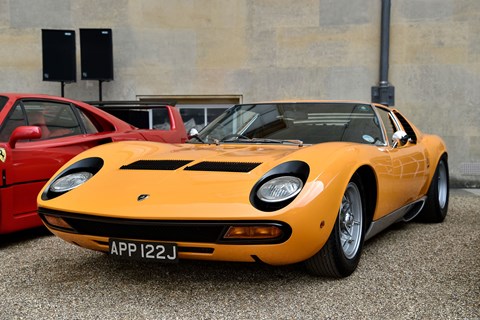
It’s not a surprise that the Miura family were proud when they found out that Lamborghini had named a car after their line of bulls. The short name, applied to the fiercest and most powerful bulls, was just what Ferruccio needed to describe his engineers’ ground-breaking creation. The mid-engined Miura redefined the concept of a sports car with its transverse-mounted V12, 170mph-plus top speed and lithe, Ford GT40 influenced styling. The age of the supercar (a term put into popular parlance by CAR’s LJK Setright) had arrived.
Lamborghinis Islero (1968 – 1969) and Urraco (1972 – 1979)
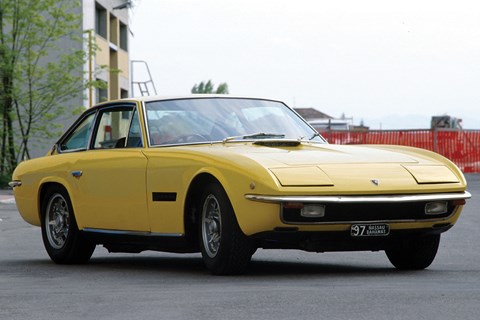
Both the Urraco and the Islero (pictured above) take their names from a bullfight during which the Urraco-bred Miura bull killed a famed matador. They nearly did the same to Lamborghini. The Islero was perhaps one of the less loved Lambos and the Urraco’s lack of sales success brought the company to its knees.
Lamborghini Espada (1968 – 1978)
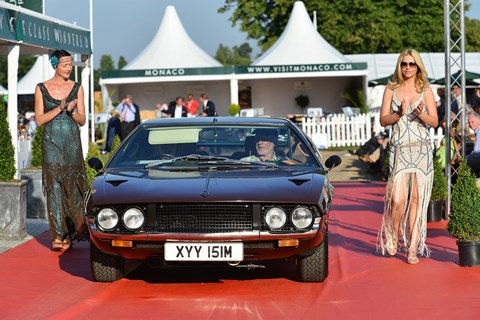
The Espada was born from Lamborghini’s desire to introduce a luxurious four-seater in his line-up (Ferrucio was always more of a GT man at heart than a supercar fan). The means a matador’s sword in Spanish and is often referred to the bullfighter himself. A ‘sharp’ model that turned into a best-seller (of sorts) with 1227 sold between 1968 and 1978. Likewise, the four-door Estoque concept of 2008 was named after the estoc, a sword traditionally used by matadors.
Lamborghini Jarama (1970 – 1976)
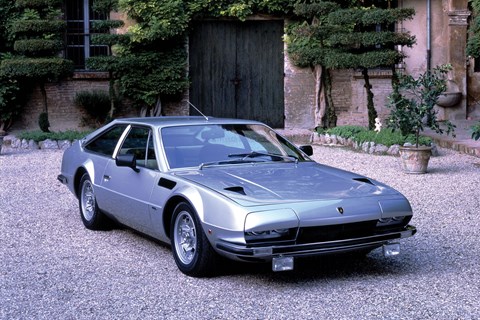
The Jarama, the Islero’s chubby successor, provoked a mixed reaction at launch, partly because the need to meet US safety and emissions regulations had made it a heavier car than ideal. Similarly the origins of its name have a confusing double meaning – intended to refer to a district in Spain that breeds fighting bulls, Jarama is also the name of the racing circuit outside Madrid that previously hosted the Spanish Grand Prix.
Lamborghini Countach (1974 – 1990)
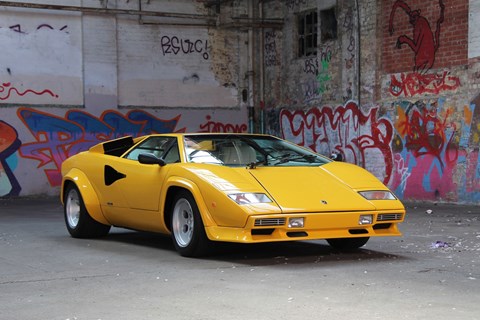
Perhaps the most celebrated Lamborghini name of all. Countach is a word from the local Piedmontese dialect which signifies an exclamation of amazement. The apocryphal tale is that design legend Nuccio Bertone uttered the word when he first caught sight of the Marcello Gandini-designed prototype, and the name stuck. There’s no direct translation; calling it the Lamborghini Cor Blimey doesn’t quite have the same effect somehow.
Lamborghini Jalpa (1981-1988)
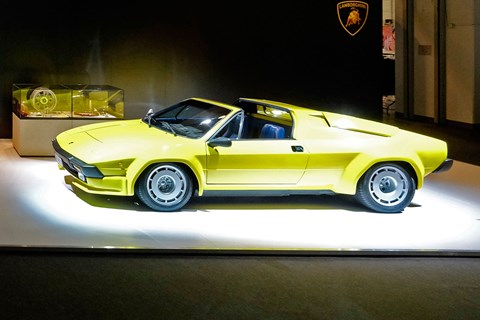
Lamborghini’s last V8 (for now – the upcoming SUV is likely to pack eight cylinders too), the oft-forgotten Jalpa junior supercar also took its name from a breed of fighting bulls.
Lamborghini Diablo (1990 – 2001)
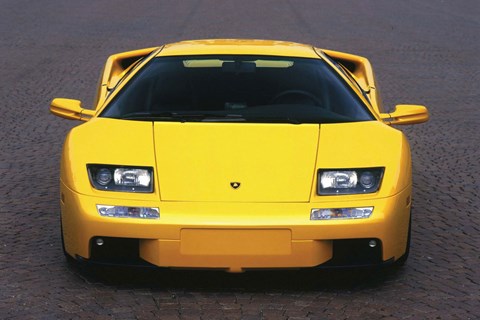
One of Lamborghini’s most intimidating supercars, the Diablo had an 11-year production run including six generation revisions. It was named after one particularly infamous fighting bull.
Lamborghini Murcielago (2002 – 2010)
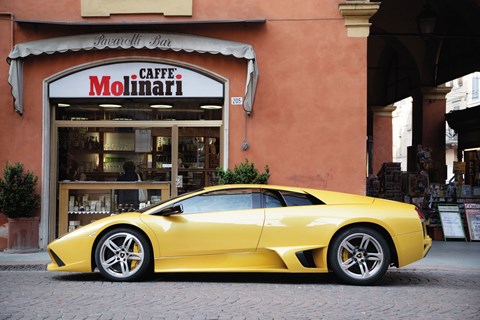
After surviving 28 sword strokes, the Navarro fighting bull Murciélago (the Spanish word for ‘bat’) was spared by the matador and later presented as a gift to Don Eduardo Miura’s brother. The Lamborghini Murcielago was similarly fearsome – nearly as wide as a bus, just as difficult to reverse and terrifyingly fast. A proper old-school supercar for the new millennium. Click here to read CAR’s original Lamborghini Murcielago review.
Lamborghini Gallardo (2003 – 2013)
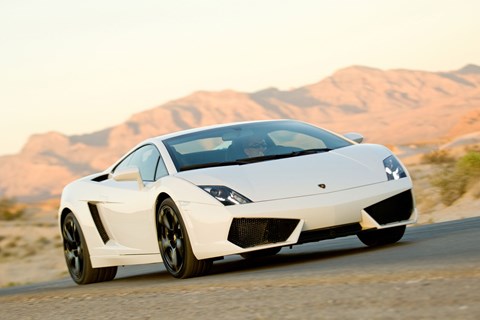
The bull saga continued – the Gallardo was the historic breed that created the Miura line of bulls during the 1840s. The V10-powerd Gallardo is the best-selling Lambo ever by some margin (and will remain so for some time until the Huracan catches up – if it ever does). CAR’s favourite was the limited edition, rear-wheel drive Balboni. Click here for CAR’s Lamborghini Gallardo LP560 review.
Lamborghini Aventador (2011-on)
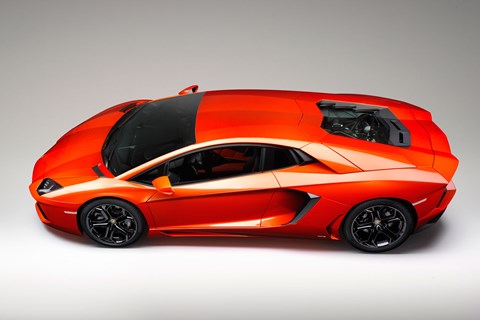
The latest in the line of V12 Lamborghinis is named after a successful fighting bull from the early 1990s. The successor to the Murcielago, it’s better in almost every way and lacks some of the older car’s scare factor. A good or bad thing, depending on your point of view. Click here to read CAR’s review of the latest Lamborghini Aventador SV.
Lamborghini Urus (2012)
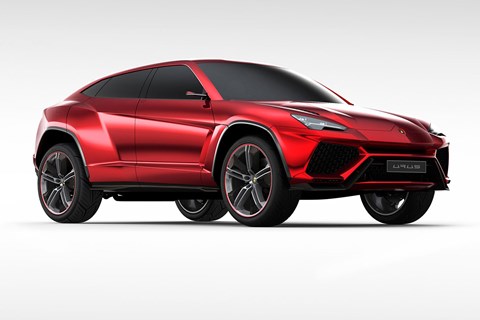
If Lamborghini sticks with the concept’s Urus name for its production 4×4, it won’t be breaking with tradition. The Urus (or Auroch by another name) is a giant ancestor of modern cattle, measuring an enormous 1.8 metres across the shoulders. A fitting name for a bulky, muscular SUV. Click here to read more about Lamborghini’s SUV announcement.
Lamborghini Veneno (2013)

An over-the-top pantomime on wheels, the Aventador-based Veneno and Veneno Roadster (pictured) were named after an appropriately fast and strong bull. Some might say it’s an appropriately gruesome name choice, too; the bull is infamous for killing a matador in 1914.
Lamborghini Asterion (2014)
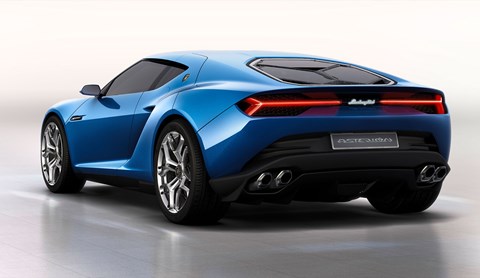
Heralding a potentially less aggressive design language for Lamborghinis in the future, the Asterion is a hybrid-powered concept car. And the name is hybrid-related too – it relates to the minotaur creature in Greek mythology: part man, part bull. Click here for more about the Lamborghini Asterion.
Lamborghini Huracan (2014-on)
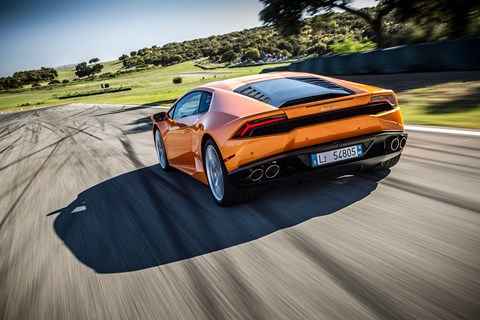
Just the Spanish word for hurricane, isn’t it? Well yes, but there’s a bull reference too – Lamborghini references one particular bull that fought in Alicante in 1879. Incidentally, it’s also the name of the Mayan god of wind, storm and fire. Appropriate. Lamborghini had initially planned to call the Huracan the Cabrera – another Spanish fighting bull’s name. Click here for CAR’s Lamborghini Huracan review.
What do you think Lamborghini should call its upcoming 4×4? Let us know your suggestions – serious or otherwise – in the comments below.